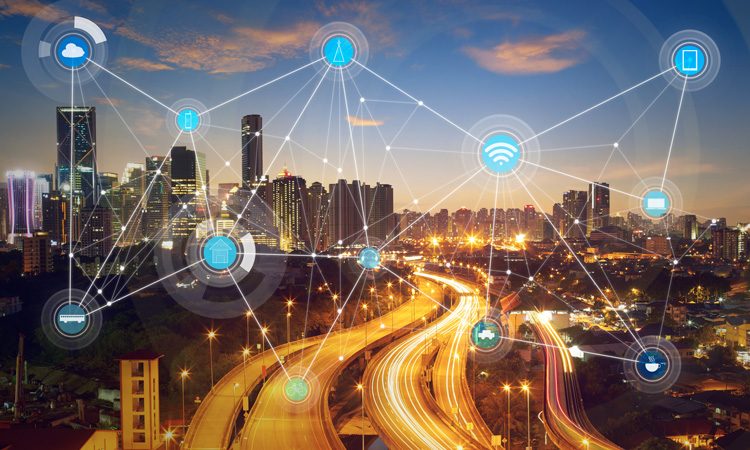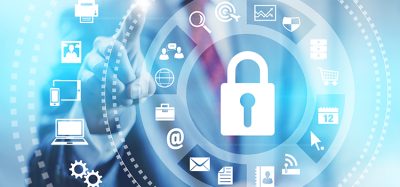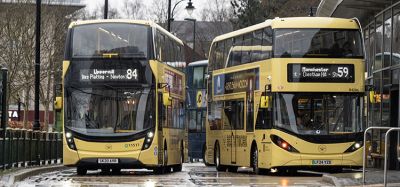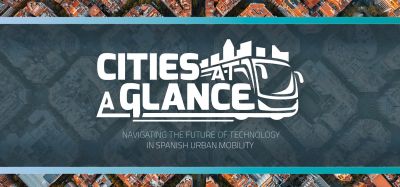The Internet of Things: a roundtable discussion
- Like
- Digg
- Del
- Tumblr
- VKontakte
- Buffer
- Love This
- Odnoklassniki
- Meneame
- Blogger
- Amazon
- Yahoo Mail
- Gmail
- AOL
- Newsvine
- HackerNews
- Evernote
- MySpace
- Mail.ru
- Viadeo
- Line
- Comments
- Yummly
- SMS
- Viber
- Telegram
- Subscribe
- Skype
- Facebook Messenger
- Kakao
- LiveJournal
- Yammer
- Edgar
- Fintel
- Mix
- Instapaper
- Copy Link
Posted: 5 September 2019 | Carol Schweiger - Schweiger Consulting, Craig Fleming - CENSIS, Francois Fischer - ERTICO | No comments yet
We asked industry experts Carol Schweiger, President of Schweiger Consulting, François Fischer, Senior Manager Innovation and Deployment, ERTICO and Craig Fleming, Senior Business Development Manager, CENSIS, for their thoughts on the Internet of Things (IoT) and its applications within transport. Here’s what they had to say.


Participants:
  |
  |
  |
| Carol Schweiger, President of Schweiger Consulting | François Fischer, Senior Manager Innovation and Deployment, ERTICO | Craig Fleming, Senior Business Development Manager, CENSIS |
What would you say are the most important applications of IoT to transport?
Schweiger: The most beneficial applications of IoT are those which use specific IoT devices to facilitate the integration of on-board public transport technologies, and those that provide access to the cloud for data management and analytics. The use of these devices will then enable improved mobility through systems that rely on the real-time enterprise data, such as Mobility-as-a-Service (MaaS). Firstly, on-board mobile routers/wireless gateways allow the integration of on-board technology, such as automatic vehicle location (AVL), computer-aided dispatch (CAD), automatic passenger counting (APC), on-board surveillance, on-board component health (e.g. engine, transmission), driver performance (e.g. G-force monitoring), intelligent vehicle technologies (collision warning and precision docking), transit signal priority (TSP) and automated fare payment.
Secondly, these devices provide communication between the vehicle and central dispatch or data centre and can provide Wi-Fi for passengers. Furthermore, the use of mobile routers/wireless gateways can determine and select the best available wireless network through roaming across a variety of networks and can access more than one network by accommodating more than one subscriber identity module (SIM) card from other communication devices (e.g. Bluetooth, radio).
Finally, IoT allows the use of cloud platforms and web services that provide remote access to, for example, data and analytics, and provide other functions, such as on-board application upgrades and payment transactions.
Fischer: Two types of applications of IoT technologies are going to be relevant for the transport sector. At the vehicle level, the most important application is about autonomous driving and in the future, driverless vehicles. Current partially autonomous vehicles are using their internal sensors to detect obstacles and to maintain their local dynamic map which models the vehicle driving environment. But much additional useful information about the vehicle driving environment can be dynamically collected from other sensors outside the vehicle such as other vehicles, pedestrians, cameras, road sensors and parking sensors. IoT platforms are addressing the needs to collect data from different heterogenic sensors; most of them located outside of the vehicle, as well as managing the data to provide the vehicle Autonomous Driving application with real time useful information about the diving environment.
At the user level, the transport value chain is rapidly evolving from the concept of vehicles owned by the users towards a new paradigm driven by the demand of MaaS.
Fleming: CENSIS’ work with industry and academia has highlighted a number of emerging themes from the transport sector. Firstly, the so far untapped potential for integrating IoT into commercial vehicles and transport infrastructure for predictive maintenance, allowing users to fix faults before they become critical. Secondly, the use of IoT sensors on transport platforms to gain insight on passenger flow and environmental conditions such as carbon emissions. Finally, it is impossible to ignore MaaS. It offers the potential for quick, comfortable, hassle-free travel; optimising routes and managing payments with ease.
Of these, where do you see the key potential growth areas?
Schweiger: The growth areas concern real-time customer information, predictive analytics and real-time transactions. With IoT devices, the reliable and timely communication of critical operational transport data can be used to automatically update transport customers as they are traveling. Prior to IoT, the communication of information from public transport vehicles could be unreliable for two reasons: only one communication network was available to send vehicle location data back to dispatch and that one communication network could be unavailable for some period of time, meaning that real-time locations cannot be provided at reasonable intervals. With new IoT devices, the best available communication network would automatically be selected to send the location data, thus improving the reliability of sending the data.
In terms of predictive analytics, the use of IoT allows more operational data, stored in the cloud, to be available for immediate analysis. Instead of waiting for data, such as passenger counts, to be downloaded at the end of the service day, the data in the cloud can be used in real-time to be pro-active about certain operational situations. Furthermore, with more data available in the cloud and potentially stored in a data warehouse rather than in individual flat files, more comprehensive and meaningful analyses can be conducted on the fly. Finally, the ability to conduct real-time transactions, such as those associated with mobile fare payment is possible now with IoT. Prior to IoT, these transactions could not be performed fast enough to be done in real-time, sometimes leading to lost revenue. Many transport authorities are beginning to implement mobile fare payment due to the use of IoT devices.
Fischer: Autonomous vehicles are seen as a very big steps towards new model driving usage of vehicles and will consequently significantly transform the road transport ecosystem. Autonomous driving is expected to increase road safety but also provide more comfort for the driver. Driverless vehicles are going to create new business models when removing the driver from the transport value chain. The path towards driverless vehicles will, however, be progressive. Autopilot functions used on highways are already available on many car models, but autonomous driving in cities, with a complex driving environment, will require vehicles to use connectivity to communicate with other road users or with the road infrastructure.
Among the different autonomous driving use cases, automated valet parking provides a very good example of the key role to be addressed by IoT technologies. Leaving or picking up one’s car at the parking entrance and thus avoiding searching for a free place and manoeuvring the car is a service every parking facility would like to offer. Today’s car could already be remotely controlled by the parking application, which would use the parking sensors to identify free places and precisely manoeuvre the vehicle in the parking lot. The key benefit of using IoT is provided by the selection of sensors and remote-control applications adapted to the topology of the parking.
Fleming: There is a strong opportunity for growth in terms of predictive maintenance for commercial vehicles. By acquiring real-time data through a network of sensors, those working in transport can be alerted to potential concerns before critical failures occur. This minimises downtime and can lower the potential cost of repairs by allowing engineers to carry out maintenance before it is too late, as well as improving reliability for passengers. The idea that repairs would only need to be carried out when a system is due to fail, rather than at set times every week or month, will be music to the ears of transport providers and local authorities, making operations more cost-effective.
Another important area is the ability to use transport infrastructure as a platform for sensors. From buses to traffic lights, structures enabled with this technology can capture data such as footfall or carbon emissions in previously unmonitored areas. This has the potential to improve passenger and transport flow. Gathering data through sensors and communicating the information regularly to those that need it can allow providers to better understand what journeys people are taking and how frequently. This creates an opportunity for tailored services, such as reducing the number of more sparsely occupied trains, buses or trams while increasing the capacity on busier routes.
What benefits can IoT-enabled transport infrastructure bring to operators and authorities?
Schweiger: The primary benefit to transport operators and authorities is more reliable data communication; being able to conduct on-board data collection and transactions in real-time and supporting new mobility solutions, such as MaaS. It is important to point out that prior to IoT, public transport technologies provided numerous benefits to operators and authorities. However, because of the lack of technology integration, the benefits could be intermittent and the technologies not as valuable as they are now. With the advent of IoT, technology integration, particularly for on-board technology, is much easier. Furthermore, access to the cloud for data collection, and real-time transactions and analytics, is greatly facilitated by IoT.
Fischer: There are two key benefits from using IoT technologies, resulting mainly from the recent efforts from the IoT stakeholders to apply common high-level architecture and develop new standards to create more interoperability inside and between IoT platforms. The Alliance for IoT Innovation (AIOTI) has addressed the needs for removing deployment barriers with IoT and bridging the standardisation gaps. However, looking at automated parking, we need to address the concerns of smart cities in terms of improving mobility, while addressing smart charging issues and needing smart buildings. All these silos will therefore work together in the future to address smart society needs. While developing new interoperable IoT platforms as well as common data models, IoT will propose smart solutions allowing the aggregation of heterogenic sensor data and federating platforms to deliver combined services to the citizen.
Fleming: The benefits of an IoT-enabled transport network are wide-ranging, from increased efficiency to better compliance and improvements to the customer experience. The data collected by sensors will allow operators and policymakers to make future decisions based on evidence rather than assumption. For example, Transport for Edinburgh is currently using IoT to improve safety on its trams by measuring and analysing driver bio-metrics. An IoT device can provide real-time alerts to control centres that a driver may have health or fatigue issues. Appropriate interventions can then be taken to reduce the risk of accidents and potentially save lives.
How important is it for the transport industry to improve connectivity more generally?
Schweiger: With IoT, transport data that was never connected previously to other markets and activities can now be used to, not only improve the understanding of how transport affects these markets, but also to better promote the use of public transport. This is especially important today, as public transport will continue to be the backbone of mobility in many communities, even though there may be other mobility options available to travellers (e.g. ridesourcing).
Fischer: Connectivity is essential for all future smart society applications, including transport. Globally, connecting the demand side with the supply side requires integrating data from millions of connected devices per application. Increasing the number of connected devices with high bandwidth and low latency is very critical for deploying the safety relevant applications of the transport sector. Beyond addressing higher performance needs, developing agile IT architectures alongside the connectivity infrastructures, with Mobile edge Computing and slicing, for example, is essential to create a new type of application providing real-time services with connected devices.
Fleming: Greater connectivity leads to greater efficiency, and it’s therefore hugely important that the industry moves towards prioritising this type of technology. If haulage companies, for example, could monitor and track freight in real-time at local, national and international levels, they can better advise their customers and offer enhanced services when sending goods around the world. In order to make changes, however, the entire sector needs to embrace IoT technology and work together. Sharing data sets between operators and authorities and working in collaboration would allow for a more integrated transport sector that will be essential in maximising the benefits for the economy and the environment. From health and safety and environmental concerns, to repairs, maintenance and compliance, the acquisition of data and insights through the use of sensors could have an enormous impact on the future of transport in society.








